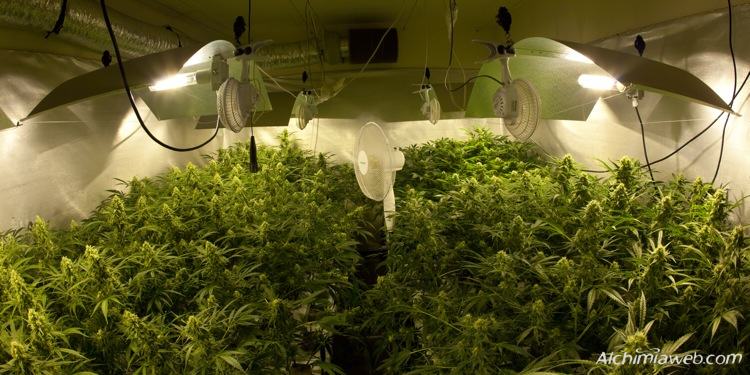How to choose the extractor fan for your indoor grow room
List of contents
When setting up your first indoor grow, the first few things to consider is the space you have available - whether it's a room or a grow tent - the lighting system needed, and the number of plants you can fit in that space. Many times, people don’t take into account the relevance of proper air exchange and how vital it is to achieve a successful harvest.
This article will help you to understand this important factor, and to decide which exhaust fan is more adequate for your grow room, so it works as efficiently as possible without wasting power.
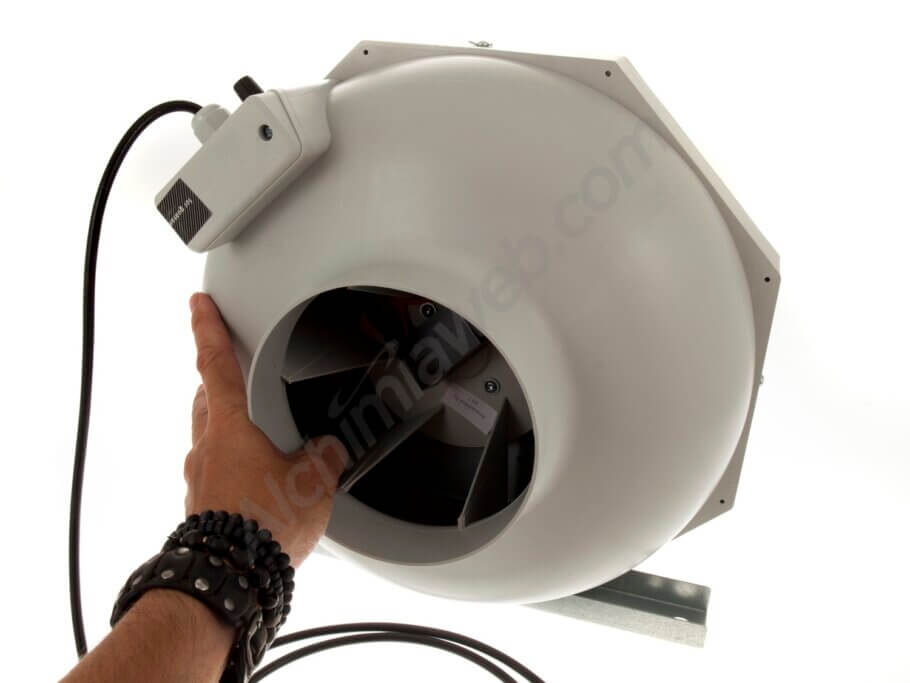
The relevance of air extraction in cannabis cultivation
Indoor grows should offer optimal conditions for the plants to successfully grow and flower, and one of the key factors to achieve this is air extraction. The air that surrounds your plants is the most important factor, given they are living creatures that carry out their physiological functions thanks to it.
Therefore, you are going to need light, humidity, the right temperature, and adequate CO2 and oxygen concentrations. Without proper ventilation and air extraction, your plants wouldn't enjoy a good air exchange or the right parameters; and without these controlled parameters, they will experience a lot of problems, like plagues or developmental issues.
Ventilation for marijuana grow rooms
The ventilation system is one of the most imortant aspects in every indoor cannabis growing setup. Which extractor do I need for my growing space? Are intractors and interior fans really needed? Do I need a cooltube? How can I reduce the noise generated by my ventilation system? Is there any way to eliminate odours? In this post you'll find the answers to all these questions, as well as several tips and advices...
Adequate air extraction and ventilation in your indoor grow room means exchanging the air about 45 times its volume per hour, and this action will be linked to and will affect the different factors mentioned above.
Temperature and air extraction
As you know, the temperature inside your grow room will be higher than outside, since your plants and grow lights do increase it. This is why proper air extraction is so important; by correctly extracting the air, you'll be able to reduce your grow room temperature.
When using climate control devices (such as air conditioning), the indoor temperatures could be lower than outdoors, and this can cause a rise in temperature due to "intraction"*, something you’ll need to take into account if you choose this solution.
*From now on, we'll refer to the action of introducing "new" air into the grow room as intraction. This term does not appear in the Oxford English Dictionary, but it's a long-established word within growers’ jargon.
Humidity and air exchange
A grow room's absolute humidity is typically higher than outdoors, especially during the dark periods due to the plants' density and transpiration. On the other hand, during the light cycle, this will greatly depend on the type of lighting, since it’s not the same using an HPS 600W kit as a professional LED panel.
Through the extraction and its corresponding intraction, you can reduce the humidity inside your grow room in order to lower the risk of suffering problems, especially in advanced stages of flowering, when there should be a relatively low humidity level to avoid the proliferation of unwanted fungi, such as powdery mildew or botrytis.
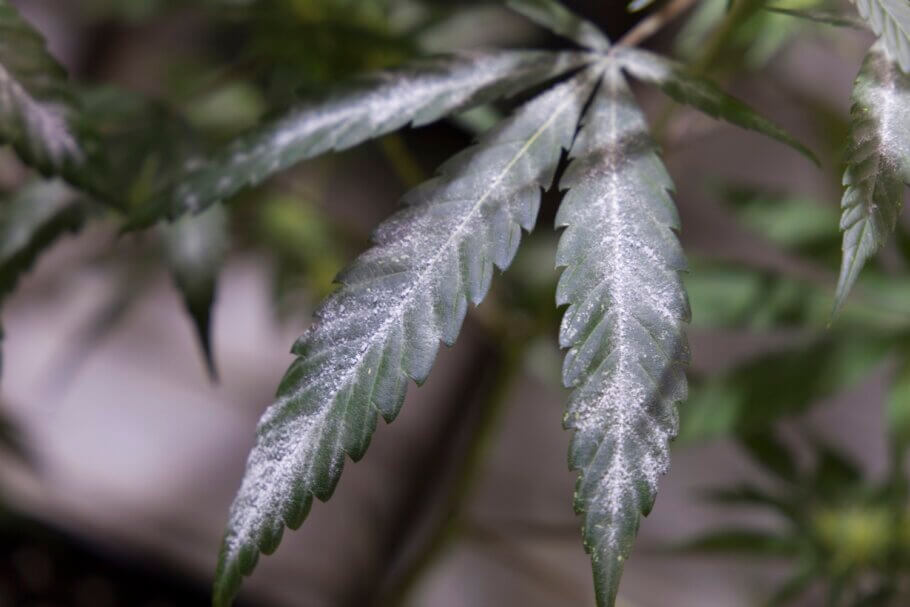
CO2 and air extraction
CO2 concentrations inside your grow tent or room will vary according to the night/day cycle. During the dark periods, your plants will generate CO2, which they'll consume during the light periods. For this reason, they need a constant air exchange in order to always have CO2 available, since they need this gas, water, and light in order to perform their so much-needed photosynthesis.
Some cultivation techniques modify certain factors and supply CO2 to the grow room with some incredible results, both in terms of growing speed and bud production.
How to optimise your cannabis grow with CO²
Controlling the carbon dioxide (CO²) levels of your indoor grow space can give incredible results. In this article we explain the importance of CO² concentration in cannabis cultivation and how to optimise these levels to boost the health and production of your plants.
Greenhouse ventilation
There are, of course, different ways to control the air exchange in a grow space. In the case of greenhouses, there are several options to ensure proper ventilation, such as wing-like overhead windows located in the upper part of the structure (to release hot air), or side windows, which can be manual or automatic.
Thanks to these solutions, the airflow created when opening a window will generate an efficient air exchange that will help you to keep the necessary parameters under control. This process can be done in different time intervals per hour, depending on the time of year and the grow conditions. More sophisticated greenhouses come with electric extraction and ventilation equipment, such as large air extractors and fans that increase the new air supply entering the grow space.
Your ally: negative pressure system
When we talk about indoor cannabis growing, we must take into account a very important factor that is not usually considered in other types of growing environments: the smell. You are not growing lettuces or daisies, and the aroma of cannabis can get you in trouble due to the current legislation in many countries, so you must be respectful of third parties such as for example, your neighbours.
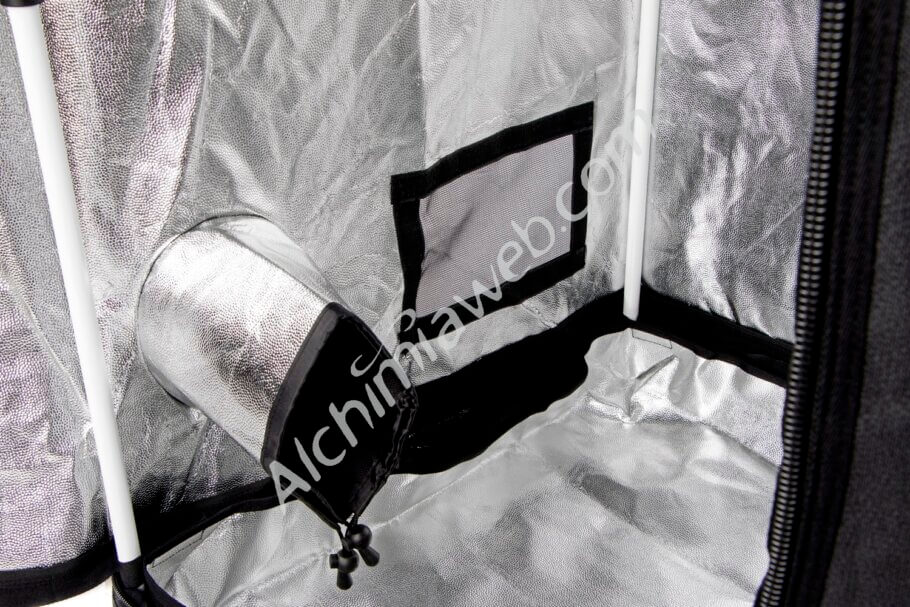
In this case, the safest method which is also directly related to ventilation (air extraction) is to always work with negative pressure, forgetting extraction timers and time cycles (as we've already mentioned, the best would be 45 times per hour). If you want to harness the negative pressure created in your grow tent or room, you should keep the air extraction system always running.
This negative pressure system is used in numerous situations; such as in-hospital bedrooms with patients who must be isolated to keep them from infecting others, as a containment method, like for example, some coronavirus cases. In more simple terms, the extractor first directs the airflow through a filter before releasing it outdoors, and this is always a bigger amount than the air flowing in.
With negative pressure, and due to the exhaust fan's strength, the air will flow inside the room (passive intraction) from under the door and from every small orifice or crack in your grow room or tent.
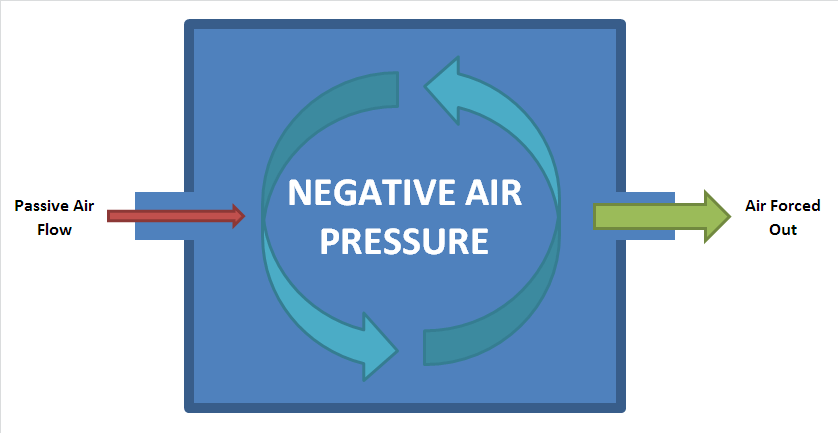
On the other hand, the last thing you want for your cannabis indoor grow room is to have positive pressure (more air in than out), since this way all the smell will get outdoors without passing first through the filter. This can be easily observed in a grow tent made of fabric; when there is more air going in than coming out, the tent will puff out, with its pertinent and unwanted odour leakages, yet you want the exact opposite: a tightening grow tent.
With respect to negative pressure systems, we always recommend keeping the extraction fan running with a carbon filter, to make sure that all the air that leaves the grow space passes through the filter via a continuous extraction process.
How to choose the right extractor fan for your grow space?
To figure out what type of negative pressure extraction you need for your indoor grow, the first thing you have to do is to cube your grow room or tent, or in other words, find out its volume in cubic meters.
In order to know the air output you need, you’ll have to calculate the volume in meters (length x width x height) and multiply the resulting amount by 50; we have previously said that the optimal air exchange was about 45 times the room volume per hour, but we'll round that number up to 50.
Once all calculations are done, multiply the result by 1,25. We add this 25% because - approximately and depending on the carbon filter model - it's the resistance or volume loss generated by the filter, so multiplying by 25% will compensate said loss. Therefore, to calculate the extractor fan's needed output (m3/h), we use the following mathematical formula:
m³/hour = Volume x 50 x 1,25
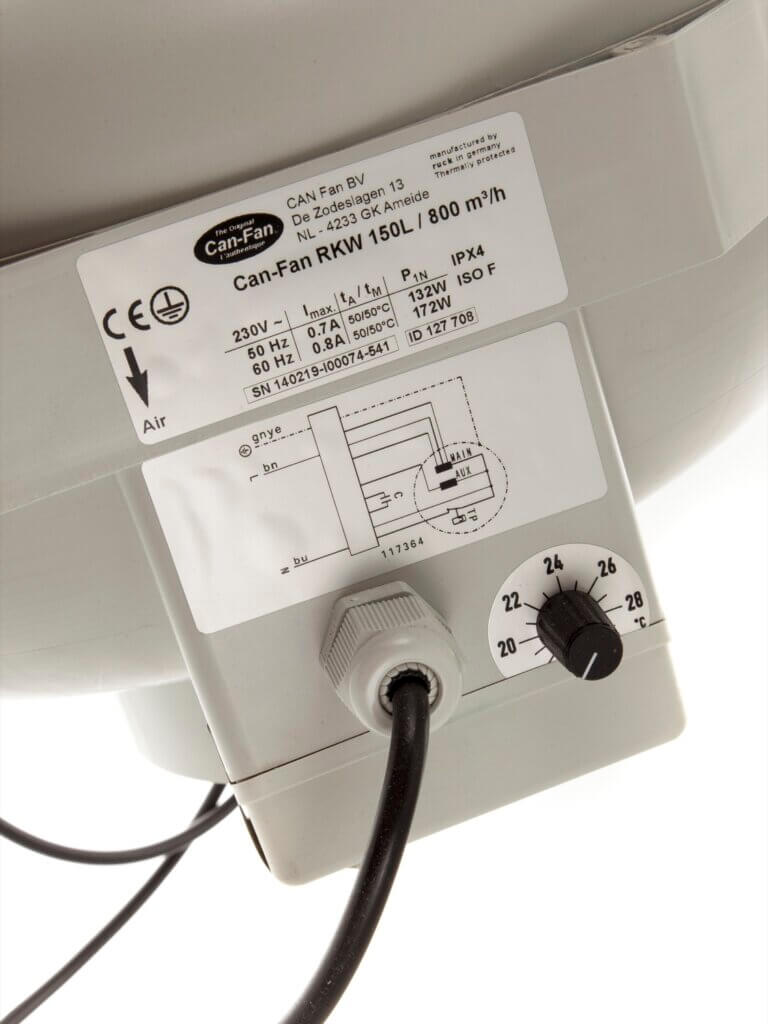
Another aspect to take into account in any setup, both with water and air, is the route of the pipes; you should always try to place the ducting in a straight line for optimal use and minimum length. This won't be possible in some grow rooms (it's easier in grow tents), and you'll have to fix it by bending the pipes as gently as possible, avoiding sharp angles. Ultimately, the shorter the length of the pipe and the fewer bends, the more optimal performance you will experience from your extractor.
A practical example of how to calculate the correct extraction output
Imagine you have a 120 x 120 x 200cm Dark Room III grow tent. The first thing you need to do is calculate the grow tent volume (the measurements are given in centimetres): 120 x 120 x 200.
Convert them to meters and perform the multiplication: 1,20 x 1,20 x 2 = 2,88m³
The volume is therefore 2,88m³; multiply that by 50 = 144 m³/hour.
Now, you just have to add the air flow loss factor by multiplying by 1,25: 144m³/hour x 1,25 = 180m³/hour.
This way, it’s clear the extractor fan you need must have an air flow of 180m³/hour minimum. Remember that your carbon filter should always have a flow rate slightly higher than the extractor's, to avoid "choking" its engine. This means you’d need the following extraction kit: 100/200m3 Alchimia air extraction kit.
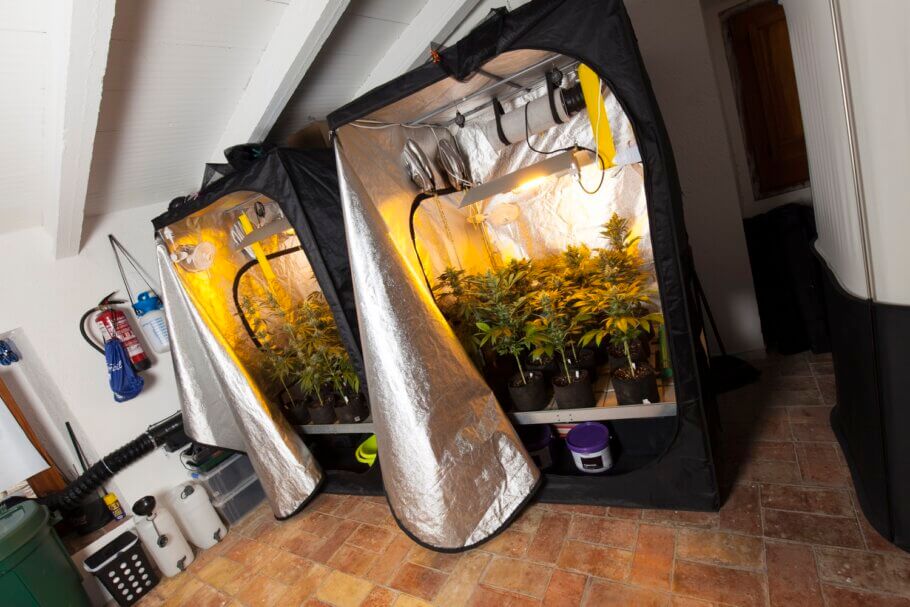
If you have some bends in your extraction pipe (you should avoid all bends of less than 45°), you need to add the loss coefficient to the mathematical formula.
Let's say there is a bend in the previous case, where you needed a 180ms³/hour extractor; you'd have to multiply the air flow of your extractor by 1,30 per each bend, in order to compensate for the losses caused by all of them.
As we mentioned before, in grow tents and small grow rooms it's relatively easy to have short and straight pipes, but for larger crops where this is not possible and you need to bend the pipes and have long routes at different heights, you must carry out a more comprehensive and complex calculation, preferably done by a professional.
You could do it yourself by increasing the system’s proportions, but in larger and more professional setups it's better to optimize resources with the pertinent investment savings; we would be talking of a difference of thousands of Euros in equipment. We usually stick to small domestic growing systems, so anybody can perform these simple calculations.
In the tent of the example, you could passively renew the air by simply opening some of the zips or lower windows. This would be enough due to the negative pressure, although you can also install a small intractor (with a lower flow than the extractor) to improve the efficiency of the air exchange.
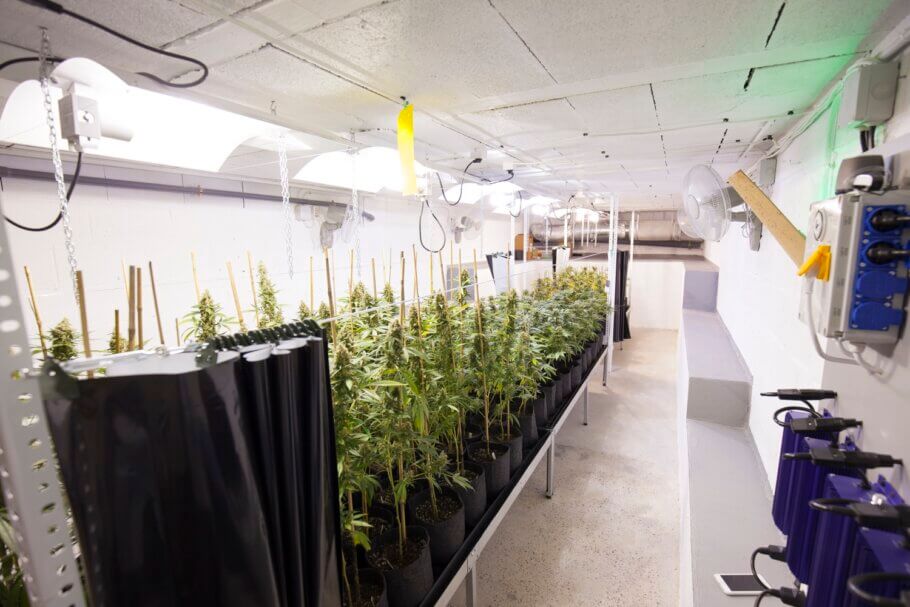
In larger grow rooms, installing an intractor with approximately 20% less flow than the extractor - or the next model down - would be enough.
When the intraction is not passive and you feed the air directly from the outside with the help of an intractor (especially in urban areas), it's highly recommended to use an anti-insect filter, as, besides the insects, you can't even starting to imagine the amount of dust, pollution and unwanted particles that manage to get in!
Now you can calculate the correct air extraction for your grow space so your plants can grow in optimal conditions and you won’t have any odour problems.
We hope you find this article useful. Do not hesitate to leave your opinion.
Happy growing!

















































